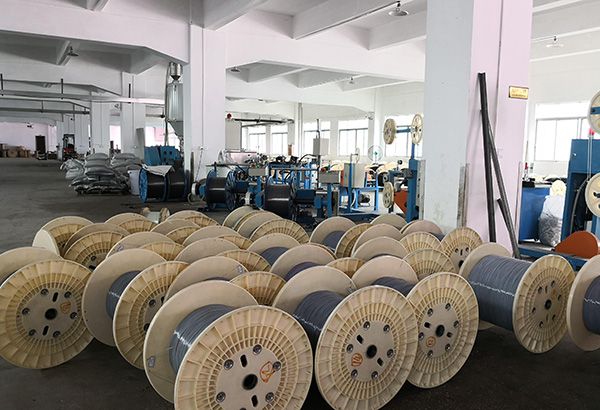Introduction:
The concept of smart homes, where various devices and systems are interconnected to enhance convenience, efficiency, and security, has become increasingly popular. Central to the success of a smart home is a robust and reliable communication infrastructure. In this article, we will explore how optical fiber cable technology is transforming the way we connect and communicate within our homes. We will delve into the advantages of using optical fiber cables in smart homes, discuss their applications, and highlight the future prospects of this technology.
The Advantages of Optical Fiber Cables for Smart Homes: a. High-speed and Reliable Communication: Optical fiber cables provide unparalleled speed and reliability for data transmission. By utilizing light signals, fiber optic cables can support gigabit or even terabit speeds, ensuring seamless connectivity and enabling quick and responsive interactions between smart devices. This high-speed communication is crucial for real-time applications such as video streaming, online gaming, and home automation.
b. Greater Bandwidth Capacity: Smart homes generate a significant amount of data traffic, from streaming media to monitoring devices and connected appliances. Optical fiber cables offer a much larger bandwidth capacity compared to traditional copper cables, providing the necessary infrastructure to support the ever-increasing data demands of smart homes. This enables smooth multi-device usage, simultaneous streaming on multiple screens, and reliable connectivity throughout the house.
c. Immunity to Interference: Unlike copper cables, which can be susceptible to electromagnetic interference from other electronic devices, optical fiber cables are immune to such disturbances. This immunity ensures a stable and consistent connection without degradation in signal quality. It is especially beneficial in environments where multiple wireless devices coexist, minimizing potential disruptions in the smart home network.
d. Future-Proofing: Investing in optical fiber infrastructure for a smart home ensures future-proofing. As technology continues to evolve, optical fiber cables can easily accommodate higher bandwidth requirements and emerging technologies such as augmented reality, virtual reality, and artificial intelligence. Upgrading the devices and systems connected to the fiber optic network becomes simpler and more efficient, as the communication backbone is already capable of supporting advanced applications.

Applications of Optical Fiber Cables in Smart Homes: a. Home Automation: Optical fiber cables serve as the backbone of a smart home's automation system, connecting various smart devices such as lighting systems, thermostats, security cameras, and voice-controlled assistants. The high-speed and reliable communication facilitated by fiber optics enable seamless control and synchronization of these devices, enhancing energy efficiency, convenience, and comfort within the home.
b. Media Streaming: With the rise of streaming services and online content consumption, optical fiber cables are indispensable for delivering high-definition video and audio to multiple devices simultaneously. Whether it's streaming movies, music, or live events, fiber optic networks ensure uninterrupted streaming without buffering or signal degradation, even when multiple users are accessing media concurrently.
c. Home Security and Surveillance: Optical fiber cables play a critical role in enabling robust home security and surveillance systems. High-definition IP cameras can be connected to the fiber optic network, providing real-time video monitoring and recording with exceptional clarity. The high bandwidth of fiber optics allows for the transfer of large amounts of data from multiple cameras, ensuring thorough coverage and reliable remote access to video feeds.
d. Smart Lighting Systems: Fiber optic cables enable connectivity for smart lighting systems, which offer features such as automated lighting schedules, remote control, and integration with other smart devices. Optical fibers distribute control signals throughout the house, allowing for precise control over individual lights or groups of lights. The speed and reliability of fiber optics contribute to the responsiveness and efficiency of smart lighting systems.
e. Voice Control and Virtual Assistants: Smart homes often incorporate voice-controlled devices and virtual assistants for hands-free operation. Fiber optic cables support the high-speed transmission of voice commands, enhancing the responsiveness and accuracy of these technologies. Seamless integration between virtual assistants, smart devices, and other systems is made possible with the reliable communication provided by fiber optic networks.
The Future of Optical Fiber Cables in Smart Homes: The future of optical fiber cables in smart homes looks promising, with ongoing advancements further revolutionizing connectivity and expanding possibilities. Some key developments to watch for include:
a. Integration with 5G: As 5G networks continue to roll out globally, optical fiber cables will play a crucial role in connecting smart homes to 5G infrastructure. Fiber optics will serve as a backhaul for the high-speed and low-latency 5G wireless network, ensuring consistent connectivity within the home.
b. Improved Flexibility and Ease of Installation: Researchers are working on developing more flexible and bend-resistant optical fibers, making installation in existing homes or retrofitting easier and more cost-effective. This will enable wider adoption of fiber optics in residential settings, bringing the benefits of high-speed connectivity to more households.
c. Enhanced Energy Efficiency: Energy efficiency is a key consideration in smart homes. Ongoing research aims to improve the energy efficiency of optical fiber components and systems, reducing power consumption while maintaining high transmission speeds. This will contribute to the overall sustainability and eco-friendliness of smart homes.
Conclusion:
Optical fiber cables are transforming smart homes by providing high-speed, reliable, and future-proof communication infrastructure. With their advantages of high-speed transmission, greater bandwidth capacity, immunity to interference, and versatility, fiber optics enable seamless connectivity between smart devices, supporting applications such as home automation, media streaming, security systems, smart lighting, and voice control. Future developments, such as integration with 5G and improved flexibility, will further enhance the capabilities of optical fiber cables in smart homes. As smart home technology continues to evolve, optical fiber cables will remain a vital component, enabling the seamless connectivity needed for a truly intelligent and interconnected living environment.



